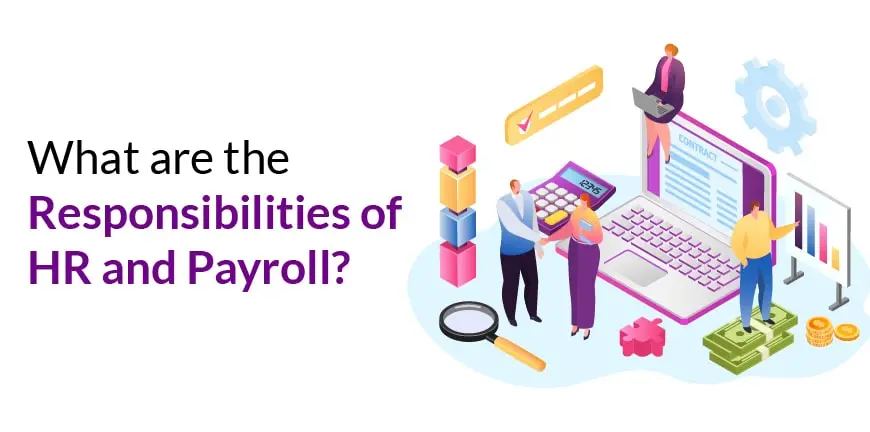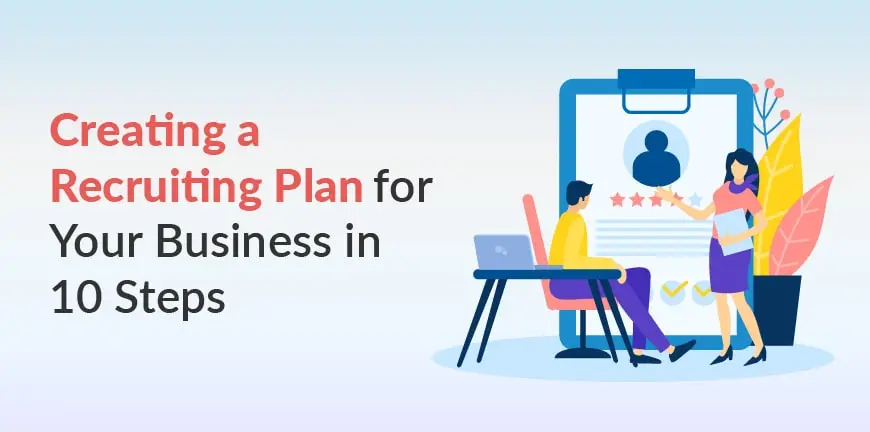
The State of Work with AI and ML in 2024
08/04/2024
What are the Responsibilities of HR and Payroll?
11/04/2024Just as you need a plan to scale a peak as high as Mt. Everest, you need to build a recruitment plan and follow it to ensure that your recruitment process is a success. However creating a recruitment plan is far from easy and requires a lot of collaboration, thinking, and analysis. In this article, we will be looking at what a recruitment plan is, how it can be created, and how it should be managed.
What is a recruitment plan?
A strategy or plan for attracting, screening, interviewing and finally onboarding the employees, is called a recruiting plan. While doing so, the process is also documented, and stakeholders are assigned to manage the recruiting plan, increasing its effectiveness.
What are the Basics of Recruitment Plans?
Before you begin the process of recruitment, you must have a plan ready, and this plan will be a series of steps to improve the efficiency of the recruitment process. There are some basic components you cannot do without in a recruitment plan. Some of these components of a recruitment plan define who the stakeholders in recruitment would be, the number of rounds in each stage of the recruitment, how long the onboarding process would be, and the qualification criteria at each stage.
What are the Advantages of a Recruitment Plan?
An effective recruitment plan can help align the hiring techniques and strategies with the business goals. It can help define the objectives at each stage of recruitment and map the candidate with the right people in the organization to assess his/her strengths and suitability for a given role. Thereby, it streamlines the hiring process by defining duties and metrics, and reduces the costs of hiring and finding the hires your business has always wanted.
How to Create a Successful Recruitment Plan?
Let us now look at the steps to build an effective recruitment plan. Here they are from start to finish. You may alter their order depending on your individual recruitment needs.

1. Research recruitment needs
What do you expect to achieve this time in the recruitment, such as lowering the cost of hiring, reducing the time to hire, increasing diversity in hiring, etc? Decide which metrics you want to focus on and how you will achieve them. Also, look at ways and research methods that will help you achieve the results you want to see when you implement the recruitment plan.
2. Define a candidate sourcing strategy
What will your candidate sourcing strategy be? Where will you begin attracting candidates? What tools will you use to promote the position? What channels will you be using to source the candidates? These are some of the questions you need to answer here.
3. Do a skills gap analysis
What are the skills your workforce possesses that are unique to it and give you an advantage? Where are you falling behind the competition and who are the people you must hire (with specific skills) to bridge the gap? These are some of the questions you must answer when you are doing a skills gap analysis.
4. Pick the right recruitment tools
At each stage of the recruitment process, there will be tools that find better use. When drafting job descriptions, AI tools such as ChatGPT 4 could be very useful. During the screening and interviewing phases, applicant tracking systems and video conferencing applications are your go-to tools, respectively, to simplify hiring. There are even tools that are specially designed to help manage diversity in your company. During the recruitment planning process, make a shortlist of such tools.
5. Forecast hiring needs
Try to estimate the number of hires you would need for the company. Perhaps your company has laid off a few employees. How must you modify the recruiting plan so that your organizational structure (or the one suggested by the management) remains intact? You must ask such questions when building a recruitment plan.
6. Set a recruitment budget
Now set a budget for the recruitment process. How much can you realistically afford to pay each employee so that your reputation as a brand is not affected? Set both an upper limit as well as a lower limit that you expect to meet for the recruitment budget during the recruitment planning process.
7. Design a recruitment calendar
Having a recruitment calendar is a big step forward and can be the difference between a well-planned recruitment process and one that changes from time to time and does not yield the desired results. Plan for roles in each department and have timelines for when you should fulfill each requirement.
8. Update job descriptions
Make sure the job descriptions you posted are realistic in their expectations and that the company is projected honestly and truthfully. The process of engaging your future employees begins with a great job description. So, make it great. Create template(s) that you will follow for the job descriptions when building a recruitment plan.
9. Create and refine your selection process
How many rounds of interviews have you planned for the candidates, and do they vary from role to role? What are the techniques you will use to understand the behavioral attributes of the candidate? Who will be the people involved with the hiring process at each stage and what will their specific contributions be for each role and department? You will need to answer these questions in this step of the recruitment planning process.
10. Establish an onboarding process
To make the journey good for each employee who joins your company, make sure that you do the right kind of onboarding. You must discuss the policies of the company in greater detail, you must decide who from the HR team will be handling the onboarding and who will mentor the employee once they are on the floor.
There are two things you need to do to ensure that your recruiting plan is successful. First, your recruitment plan is a living document. You must revisit it frequently to ensure that the recruitment process keeps improving in efficiency. You can modify it to suit the recruitment metrics you have set to achieve your business goals.
Second, you must collaborate with the teams that need the new employees to fill in the roles. This will help you understand firsthand their challenges and the opportunities that the recruit will have to show his/her worth.
Looking for a Partner in Your Recruitment Planning?
Recruitment planning can take a lot of effort, especially if your company is looking to scale or is already very large. When your hiring needs are very complex, it is difficult to arrive at an effective recruitment plan that balances all your needs.
Alp Consulting has been a recruitment partner for several top companies worldwide for over two decades now. Talk to us and let us take care of recruitment planning for you.
Frequently Asked Questions
1. How do you make a recruitment plan?
To make a recruitment plan, you could get your HR team’s help or outsource to a third-party HR consulting company that will take over recruitment planning for you. Then begins the process of making the recruitment plan, which we have described in detail in how to create a recruitment plan earlier in the article.
2. What makes a recruiting plan effective?
A recruiting plan is effective when first it can be altered to suit the immediate needs of the company and second, when there is collaboration between the various stakeholders who work together to close a position in the company.
3. Who should use a recruiting plan?
A recruitment plan must be used by any recruiting team. An effective recruitment plan involves a lot of discussions to ensure a robust sourcing strategy, a strong talent pool and employer reputation, and the right remuneration and great experience for each candidate.



